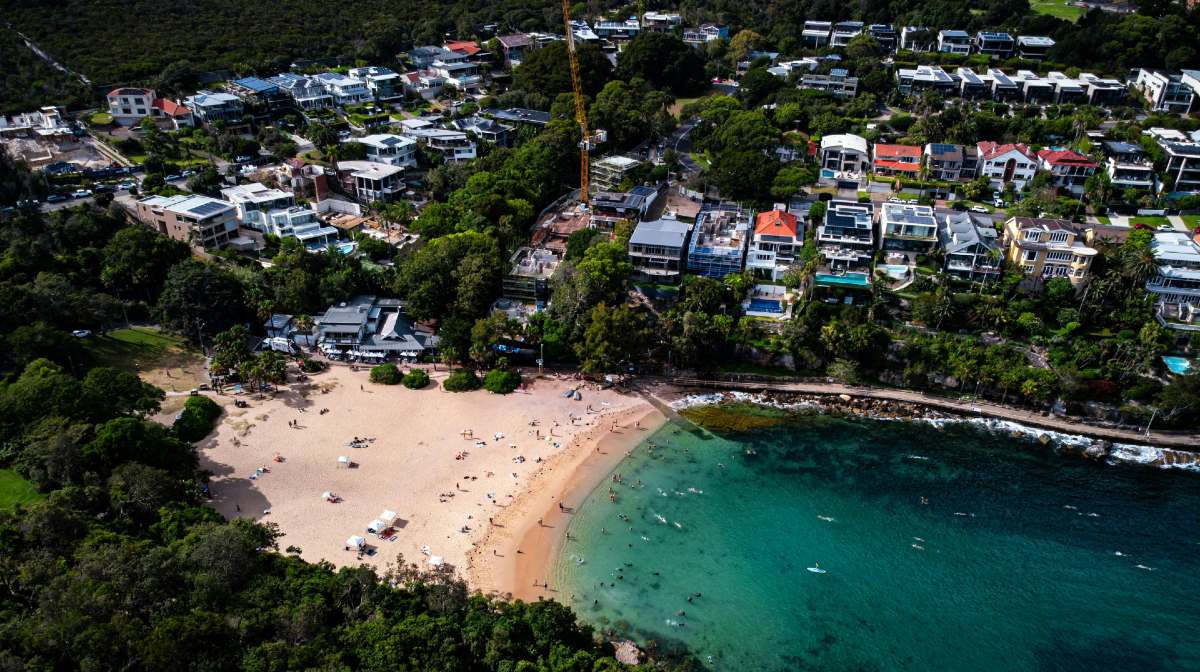Foreign-owned residential properties in Australia are estimated to account for about 2% of the nation's total housing stock. In 2022-23, the latest financial year where data is available, foreigners purchased 5,360 homes - not quite 1% of total sales.
But amid a critical housing shorting, new regulations have greatly restricted any further foreign property ownership in Australia - at least in the short term.
Buying property in Australia as a foreigner
The Australian government has placed a temporary ban on foreigners purchasing existing residential dwellings. The ban took effect on 1 April 2025 and is slated to last at least two years until 31 March 2027 - although this will be subject to review.
The ban applies to all foreign persons and foreign-owned companies, and also to temporary residents looking to buy established homes as principal places of residence (PPOR). Prior to 1 April 2025, foreign nationals were permitted to buy existing dwellings if they were in Australia for work or study and were to reside in the purchased property. That's no longer the case.
However, foreign nationals and temporary residents can still apply for government approval to purchase vacant land, new dwellings, or existing homes for certain types of redevelopments.
Let's examine the rules as they stand.
What properties can foreign nationals buy in Australia from 2025-27?
The Australian Taxation Office (ATO) is very specific about the types of property than can be bought under the foreign purchase ban and there are strict conditions surrounding any purchases. Before a foreign person buys any residential property, they must first apply for approval or an exemption certificate.
Below are some limited exemptions to the blanket ban:
Can foreigners buy a residential property for redevelopment 2025-27?
The ban on foreigners purchasing existing homes makes exception for property investments that will significantly increase housing supply or support the availability of housing in Australia.
From 1 April 2025, foreign nationals can buy established dwellings for redevelopment under strict conditions:
-
The property is vacant at settlement
-
No part of the existing dwelling is occupied from the date of settlement until construction of additional dwellings is complete
-
At least 20 additional dwellings are being built on the property
-
Construction of all dwellings is completed within four years of the approval date
-
Evidence of completion of construction must be submitted to the Australian Taxation Office within 30 days
-
There is no sale, transfer, or disposal of interest in the property before construction is complete
-
When construction of dwellings is complete, at least one of the dwellings is rented or sold to an independent third party
Housing Australian-based employees
There are different rules for foreign companies employing people from Pacific Island countries and Timor-Leste, including those participating in the Pacific Australia Labour Mobility scheme.
These programs generally require employers to provide housing for their workers and may qualify them to purchase one or more established homes for this purpose, provided:
-
The property is used solely to accommodate workers from these eligible countries.
-
The property must be sold, transferred, or disposed of within six months of when it is first expected to remain vacant for six months or more, or has remained vacant for six months or more (whatever is the earliest).
Can foreigners buy new homes in Australia from 2025-27?
The ATO says it will generally approve an application to buy a new home, as long as it's not a single dwelling built to replace one or more demolished dwellings.
Where a single dwelling has been knocked down and replaced with another single dwelling, foreign buyers will not be approved to purchase it.
A foreign buyer's best course of action is likely to purchase a new dwelling directly from a developer. Developers can apply for foreign purchaser exemption certificates on their new builds but, if they haven't, it is up to the buyer to apply for approval.
Under the rules, a new residential dwelling is one that:
-
Will be, is being, or has been built on residential land
-
Has not previously been sold as a dwelling
-
Has not be previously occupied, or was not occupied for more than 12 months if it was sold in a development
Can foreigners buy vacant land in Australia from 2025-27?
Foreign nationals can buy vacant residential land as long as it meets certain criteria. This includes:
-
The land could reasonably accommodate fewer than 10 dwellings
-
The land is not being used wholly and exclusively for a primary production business
Land that had previously accommodated an established dwelling is generally not considered to be vacant land suitable for foreign purchase.
The ATO says it will generally approve an application for a foreign national to purchase vacant land provided:
-
At least one residential dwelling is to be built on the land
-
The land is not sold, transferred, or otherwise disposed of before construction of the dwelling is complete
-
Construction of all dwellings is completed within four years from the date of approval
-
Evidence of completion of construction is submitted within 30 days of receiving it
See the ATO's conditions to apply to buy a residential property as a foreign person for further details.
Who is exempt from the foreign property purchase ban in Australia?
Permanent residents in Australia are exempt from the ban, as are New Zealand citizens. As well, foreign national spouses of Australian and New Zealand citizens and other permanent residents in Australia can purchase properties as joint tenants.
However, foreign nationals who are proposing to be tenants in common on a property's title deed must apply for approval and pay an application fee based on their percentage ownership in the property.
See also: The pros and cons of buying a house with family or friends
What are the costs of applying to purchase a property as a foreigner in Australia?
The application fees for purchasing a foreign property in Australia operate on a sliding scale according to property value.
Here is the fee schedule for established dwellings up to $10 million, current until 30 June 2025.
|
Amount |
Fee per action |
|---|---|
|
Less than $750,000 |
$12,900 |
|
$1 million or less |
$44,100 |
|
$2 million or less |
$88,500 |
|
$3 million or less |
$177,000 |
|
$4 million or less |
$265,500 |
|
$5 million or less |
$354,000 |
|
$6 million or less |
$442,500 |
|
$7 million or less |
$531,000 |
|
$8 million or less |
$691,500 |
|
$9 million or less |
$708,000 |
|
$10 million or less |
$796,500 |
Here is the fee schedule for new or near-new residential dwellings, and vacant residential land valued at up to $10 million, current until 30 June 2025.
|
Amount |
Fee per action |
|---|---|
|
Less than $750,000 |
$4,300 |
|
$1 million or less |
$14,700 |
|
$2 million or less |
$29,500 |
|
$3 million or less |
$59,000 |
|
$4 million or less |
$88,500 |
|
$5 million or less |
$118,000 |
|
$6 million or less |
$147,500 |
|
$7 million or less |
$177,000 |
|
$8 million or less |
$206,500 |
|
$9 million or less |
$236,000 |
|
$10 million or less |
$265,500 |
Additional costs of foreign property investment in Australia
If approval is granted, as well as the cost of the property itself, there will also be state or territory stamp duty. All six states apply additional stamp duty surcharges of 7-8% for foreign purchasers.
Where the property is an investment, all states of Australia apply land tax and New South Wales, Victoria, Queensland, and the ACT also imposing additional land tax surcharges for foreign investors.
Foreign nationals who currently own residential properties are also subject to an annual vacancy fee if their property is not residentially occupied or genuinely available for rent for more than 183 days (approximately six months) during a 12-month period. This will still apply. These fees are also calculated on a sliding scale according to property value.
Image by Dillon Hunt via Pexels
First published in March 2023
Collections: Buying a home




Share